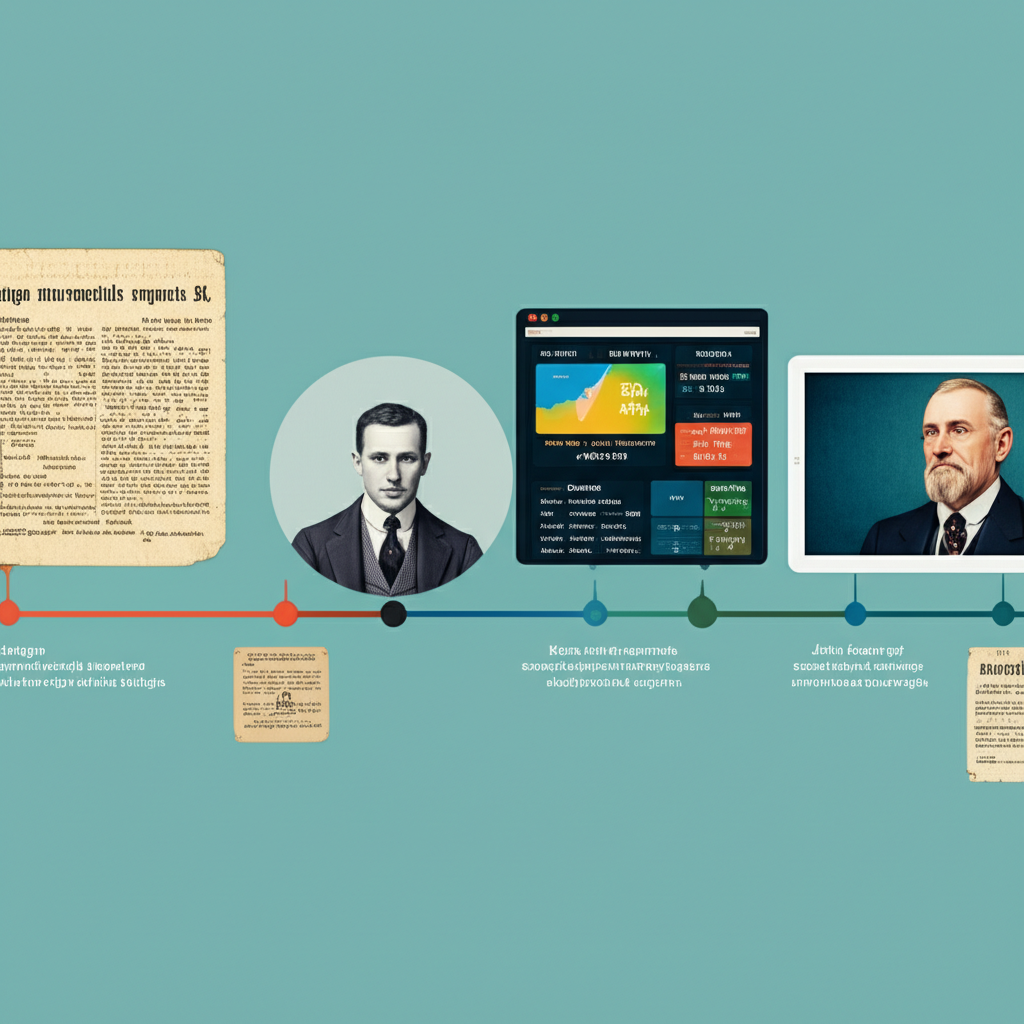Introduction: What Exactly Are Credit Rating Agencies?

A credit rating agency (CRA) is a specialized firm tasked with evaluating the creditworthiness of borrowers—ranging from corporations and financial institutions to entire countries. These assessments result in credit ratings, which reflect the likelihood that a debtor will meet its financial obligations on time. In essence, these ratings act as a barometer for default risk, offering investors a clear signal about the safety or risk level of a particular bond or loan. By delivering independent, data-driven insights, credit rating agencies help maintain transparency in financial markets and support the efficient allocation of capital. Their influence extends across a broad spectrum of debt instruments, including corporate bonds, municipal securities, sovereign debt, and complex structured finance products.
The Foundational Role and Purpose of Credit Rating Agencies

At the heart of financial markets lies an information gap: investors often lack the time, expertise, or access to fully assess the financial health of potential borrowers. This is where credit rating agencies step in. Their primary mission is to reduce information asymmetry by offering objective, expert analysis of a borrower’s ability to repay debt. For investors, these ratings serve as a trusted benchmark—simplifying complex financial data into a digestible format that enables smarter investment choices. A high credit rating signals lower risk, helping investors determine whether a bond aligns with their risk tolerance and return objectives.
On the other side of the equation, issuers—whether multinational corporations or national governments—rely on favorable ratings to secure financing at competitive rates. A strong rating can open doors to larger pools of capital and reduce interest payments over the life of a debt issuance. This dynamic creates a self-reinforcing cycle: better ratings lead to lower borrowing costs, which in turn can improve financial stability and support economic growth. In this way, credit rating agencies play a crucial role in the smooth functioning of capital markets, fostering trust, encouraging investment, and contributing to overall market efficiency.
A Brief History of Credit Rating Agencies: Evolution and Milestones

The roots of credit assessment trace back to the 1800s, when mercantile credit reporting services emerged to evaluate the reliability of businesses engaged in trade. One of the earliest examples was the Mercantile Agency, founded in 1841, which later evolved into Dun & Bradstreet. These early services focused on commercial creditworthiness, helping merchants decide whom to extend credit to in an era with limited financial transparency.
The modern credit rating industry began to take shape in the early 20th century, driven by the rapid expansion of the U.S. railroad network. In 1909, John Moody published the first bond ratings, initially focusing on railroad companies, then expanding to utilities and industrial firms. Around the same time, Poor’s Publishing Company began compiling financial data, and Standard Statistics emerged as a key player in corporate bond analysis. These entities eventually merged or evolved into what we now know as S&P Global Ratings.
The Great Depression exposed the dangers of unchecked credit risk and underscored the need for independent, standardized evaluations. As financial markets grew more complex, so too did the role of credit rating agencies. A pivotal moment came in 1975 when the U.S. Securities and Exchange Commission (SEC) introduced the concept of Nationally Recognized Statistical Rating Organizations (NRSROs), formally recognizing certain agencies as authoritative sources of credit risk assessment. This designation gave their ratings legal and regulatory weight, embedding them deeply into financial frameworks. Over the decades, CRAs expanded globally, adapting to new financial instruments and economic shifts, becoming indispensable intermediaries in international finance.
The “Big Three”: Key Global Credit Rating Agencies

Today, the global credit rating landscape is dominated by three major firms—S&P Global Ratings, Moody’s, and Fitch Ratings—commonly referred to as the “Big Three.” Together, they control the vast majority of the market for credit assessments, particularly in developed economies. Their ratings are widely referenced by institutional investors, regulators, and financial institutions, making them powerful influencers in capital allocation.
S&P Global Ratings, with origins dating back to 1860 through Henry Varnum Poor’s work, has become one of the most recognized names in finance. As a division of S&P Global Inc., it provides credit opinions on a vast array of entities, from blue-chip corporations to sovereign nations. Its AAA rating is synonymous with the highest level of credit quality, and its indices—such as the S&P 500—are deeply embedded in investment practices.
Moody’s, founded by John Moody in 1909, operates through Moody’s Investors Service and Moody’s Analytics. While the former issues credit ratings, the latter offers risk modeling and economic research tools. Moody’s distinctive rating scale uses Aaa as its top tier, and its in-depth analysis of sovereign and corporate debt is relied upon by central banks and pension funds worldwide.
Fitch Ratings, established in 1913 by John Knowles Fitch, maintains a dual headquarters in New York and London, reflecting its global orientation. Known for its balanced approach and strong presence in Europe, Fitch is majority-owned by the Hearst Corporation. It provides comprehensive ratings across corporate, financial, and structured finance sectors, often offering nuanced perspectives that complement those of its larger rivals.
Despite the dominance of these three, alternative rating agencies are gaining traction. Morningstar DBRS, KBRA, and several regional players—such as Japan Credit Rating Agency (JCR) and China Chengxin International—offer specialized insights and help diversify the market. According to an ESMA report on the EU credit rating market, while competition remains limited, regulatory efforts continue to promote greater diversity and reduce overreliance on the Big Three.
How Do Credit Rating Agencies Work? The Rating Process Explained
Assigning a credit rating is a rigorous, multi-step process that blends quantitative analysis with qualitative judgment. The goal is to produce a forward-looking assessment of default risk that remains both objective and adaptable to changing conditions.
The first stage involves comprehensive data collection. Analysts gather audited financial statements, internal management forecasts, industry benchmarks, and macroeconomic indicators. They evaluate both business risk—such as competitive positioning, operational efficiency, and management quality—and financial risk, including leverage ratios, interest coverage, cash flow stability, and liquidity buffers. For sovereign ratings, additional factors like political governance, fiscal discipline, external debt levels, and monetary policy autonomy come into play.
Once the analysis is complete, a rating committee convenes. Comprised of senior analysts and sector experts, this group debates the findings, weighs potential risks, and ultimately votes on the final rating. This collective decision-making process helps mitigate individual bias and ensures that ratings reflect a consensus view.
After publication, the work doesn’t end. Credit ratings are dynamic, not static. Agencies maintain ongoing surveillance, regularly reviewing issuers for material changes—such as mergers, earnings declines, or economic shocks—that could affect their credit profile. This monitoring can lead to upgrades, downgrades, or changes in outlook (positive, negative, or stable).
CRAs issue several types of ratings depending on the context:
– **Issuer Default Ratings (IDR)** reflect the overall likelihood of an entity defaulting on its financial obligations.
– **Issue-Specific Ratings** apply to individual bonds or debt instruments and may differ based on seniority, collateral, or structural protections.
– **Long-Term Ratings** assess default risk over a horizon of one year or more.
– **Short-Term Ratings** focus on liquidity and the ability to meet obligations within the next 12 months.
Each agency uses its own rating scale, though the general structure is similar:
– **Investment Grade** (e.g., S&P/Fitch: AAA to BBB–; Moody’s: Aaa to Baa3) indicates low to moderate default risk and is often required by regulatory mandates for certain institutional investors.
– **Speculative Grade** (e.g., BB+ and below) signals higher risk—commonly known as “junk” status—but typically offers higher yields to compensate investors.
The Issuer’s Perspective: Engaging with Credit Rating Agencies
For companies, financial institutions, or governments planning to issue debt, obtaining a credit rating is often a strategic necessity. A rating enhances market credibility and broadens the investor base. The process typically begins with the issuer formally requesting a rating from one or more agencies.
This initiates a structured engagement. The issuer signs an agreement outlining the scope and fees, then provides detailed financial reports, business plans, and legal documents—some of which may be confidential or forward-looking. Analysts then conduct in-depth interviews with senior executives to understand strategy, risk management, and future challenges.
Following this due diligence, the agency’s internal team prepares a draft analysis. Before finalizing, the issuer usually has a chance to verify factual accuracy. The rating committee then meets to deliberate and assign the rating, which is subsequently published and disseminated to subscribers and investors.
The relationship continues post-issuance. Agencies require regular updates and may schedule periodic review meetings. For issuers, maintaining a strong rating is critical. A downgrade can trigger higher borrowing costs, covenant breaches, or even forced asset sales. Conversely, an upgrade can improve market access and reduce interest expenses significantly. While the “issuer-pays” model is standard, it remains a source of debate, as some argue it may influence rating outcomes—though agencies emphasize strict internal controls to safeguard independence.
The Importance and Impact of Credit Rating Agencies in Financial Markets
Credit rating agencies exert a profound influence across the global financial system, shaping investment flows, borrowing costs, and regulatory policies.
For investors, ratings serve as a critical risk filter. Institutional funds, insurance companies, and pension plans often operate under mandates that restrict investments to investment-grade securities. A downgrade below this threshold can force automatic sell-offs, triggering volatility. Even for individual investors, ratings provide a quick reference point for comparing bonds and managing portfolio risk.
For issuers, credit ratings directly affect capital access and cost. A company with an AA rating will typically pay significantly less in interest than one rated BB, even for similar-sized issuances. This difference can amount to millions in savings over time. In public finance, sovereign ratings influence government bond yields, impacting national budgets and monetary policy.
Regulators also rely on credit ratings, particularly in banking. Under the Basel III framework, banks must hold capital against their assets based in part on external ratings. A highly rated bond requires less capital than a lower-rated one, affecting lending capacity and risk exposure. While post-crisis reforms have encouraged banks to develop internal risk models, external ratings remain a key component of regulatory calculations.
Sovereign ratings carry especially high stakes. A downgrade for a country can lead to capital outflows, currency depreciation, and rising borrowing costs. For example, when Greece was downgraded during the Eurozone crisis, its 10-year bond yields surged above 30%, pushing the nation toward default. Conversely, upgrades—such as when Indonesia moved into investment grade in 2017—can boost investor confidence and attract foreign direct investment. As shown in an IMF Working Paper, sovereign ratings have a statistically significant and economically meaningful impact on bond yields, reinforcing their central role in global finance.
Criticisms and Controversies Surrounding Credit Rating Agencies
Despite their importance, credit rating agencies have faced persistent criticism, particularly during periods of financial turmoil.
One of the most enduring concerns is the conflict of interest inherent in the issuer-pays model. Since issuers pay for ratings, there’s a perceived incentive for agencies to offer favorable assessments to win and retain business. While CRAs have implemented firewalls and governance controls, the structural tension remains a point of contention among regulators and academics.
Their performance during the 2008 financial crisis drew intense scrutiny. Agencies assigned high investment-grade ratings to complex mortgage-backed securities and collateralized debt obligations—many of which were backed by subprime loans. When housing prices collapsed, these securities defaulted en masse, undermining confidence in the rating process. Critics argued that models failed to account for systemic risk, overrelied on historical data, and lacked transparency.
The concentration of market power among the Big Three also raises antitrust concerns. With limited competition, there’s less pressure to innovate or reduce fees. Smaller agencies often struggle to gain recognition, especially in regulatory contexts where only NRSRO-designated firms are accepted.
In response, regulators implemented sweeping reforms. The Dodd-Frank Act of 2010 enhanced oversight by the SEC, mandated greater disclosure of methodologies, and encouraged the use of internal risk assessments to reduce reliance on external ratings. The European Union introduced similar measures through the Credit Rating Agency Regulation (CRAR), promoting transparency and accountability. While these changes have improved governance, debates continue over whether the fundamental model can deliver truly independent and forward-looking assessments.
Conclusion: The Enduring Role of Credit Rating Agencies
Credit rating agencies remain a cornerstone of modern finance. By evaluating credit risk and translating complex financial data into actionable insights, they help investors navigate uncertainty and enable issuers to access capital efficiently. From their origins in 19th-century mercantile reports to their current role in shaping global debt markets, their evolution mirrors the growth and complexity of the financial system itself.
While their influence is undeniable, so too are the challenges they face. Questions about independence, accuracy, and market concentration persist. Yet, in a world where information is abundant but trust is scarce, the need for credible, third-party risk assessment endures. As financial instruments grow more sophisticated and global interdependence deepens, credit rating agencies will continue to play a vital—if closely watched—role in maintaining market stability and investor confidence.
What is a simple definition of credit rating?
A credit rating is an independent assessment of a borrower’s ability and willingness to repay its debts, indicating the likelihood of default. It’s essentially an opinion on the creditworthiness of an entity or a specific debt instrument.
What are the three largest credit rating agencies?
The three largest and most influential credit rating agencies are S&P Global Ratings, Moody’s, and Fitch Ratings. They are often referred to as the “Big Three” due to their significant market share and global reach.
How do credit rating agencies make money?
The primary business model for most major credit rating agencies is the “issuer-pays” model. This means they are paid by the entities (corporations, governments, etc.) that are seeking a credit rating for their debt issues.
Why are credit rating agencies important to investors?
Credit rating agencies are important to investors because they provide independent, standardized assessments of risk, helping investors understand the likelihood of default on a debt instrument. This information is crucial for making informed investment decisions and managing portfolio risk.
What is the difference between an issuer rating and an issue rating?
An issuer rating (or Issuer Default Rating) assesses the overall creditworthiness of an entity, reflecting its general capacity to meet its financial obligations. An issue rating, on the other hand, is specific to a particular debt instrument, taking into account its unique terms, collateral, and seniority, which may differ from the issuer’s overall rating.
Can a credit rating agency be wrong?
Yes, credit rating agencies can be wrong. Their ratings are opinions based on available information and forward-looking analysis, not guarantees. Historical events, such as the 2008 financial crisis, have shown instances where ratings did not accurately reflect underlying risks, leading to significant market disruptions.
Who regulates credit rating agencies in the U.S.?
In the U.S., credit rating agencies designated as Nationally Recognized Statistical Rating Organizations (NRSROs) are primarily regulated by the Securities and Exchange Commission (SEC). The Dodd-Frank Act of 2010 introduced significant reforms to enhance the SEC’s oversight of these agencies.
How does a company get a credit rating?
A company typically gets a credit rating by approaching a credit rating agency, signing an engagement letter, and providing extensive financial and operational data. This is followed by meetings with management and an analytical review by the agency’s committee, which then assigns and publishes the rating.
What is the meaning of a “junk bond” rating?
A “junk bond” rating, officially known as speculative grade, refers to debt instruments rated below investment grade (e.g., BB+/Ba1 and lower). These ratings indicate a higher risk of default compared to investment-grade bonds but typically offer higher yields to compensate investors for the increased risk.
Are there international credit rating agencies besides the Big Three?
Yes, while S&P, Moody’s, and Fitch dominate, there are other international and regional credit rating agencies. Examples include Morningstar DBRS (formerly DBRS Morningstar), Kroll Bond Rating Agency (KBRA), and numerous national agencies that specialize in local markets.
